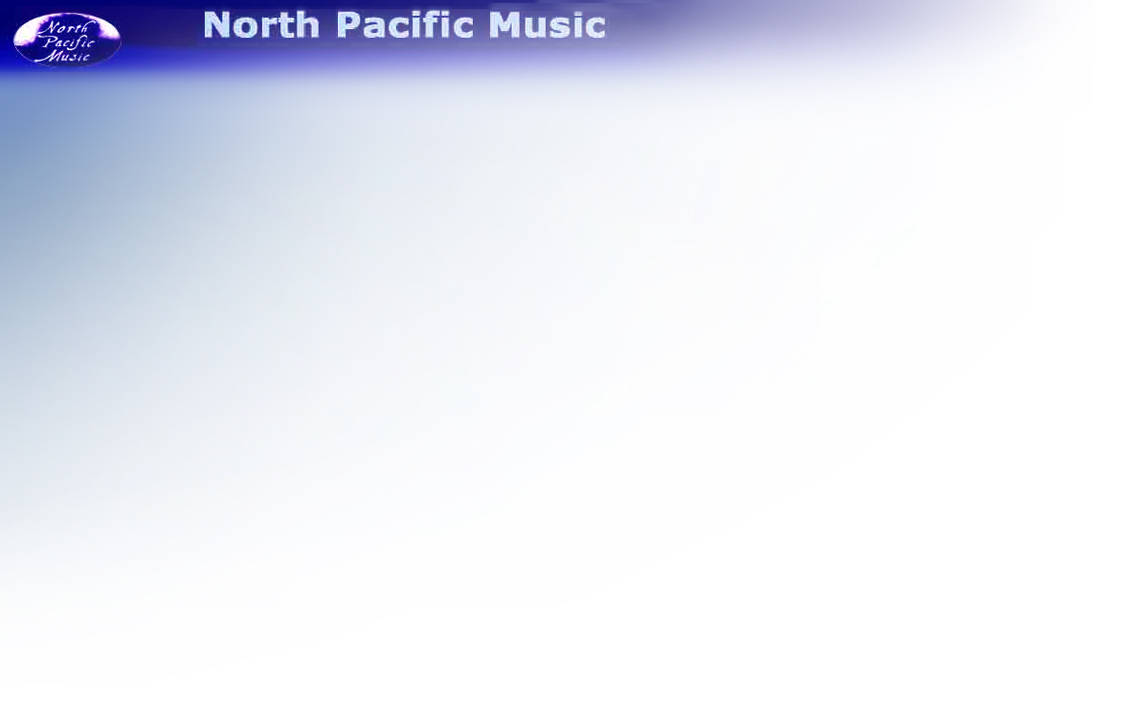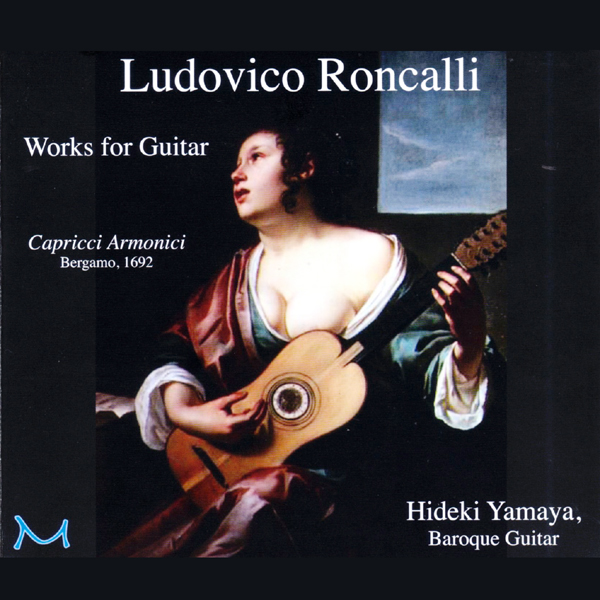


Capricci armonici sopra la chitarra
spagnola by Ludovico Roncalli
(1654-1713) is the last in a long line of books for the Baroque guitar
(or chitarra spagnola as it was called back then) published in Italy,
spanning nearly one hundred years. These publications run the gamut from
rudimentary instruction books with simple pieces intended for beginners
to collections of highly sophisticated music. The latter elevated the
status of the guitar from an accompaniment instrument used in popular
music to a solo instrument with a serious and respectable repertoire.
Capricci armonici contains arguably some of the best music written for
the guitar and thus is one of the most important sources for the
instrument.
Very little is known regarding the life of Ludovico Roncalli. According
to the title page of his book and bits of information from historical
records, we know that he was a nobleman-the Count of Montorio-and an
amateur musician. Although he was a dilettante on the guitar, his
compositions convey a picture of a highly accomplished guitarist. His
music demonstrates an intimate knowledge and understanding of the
instrument, a sense for form and balance, and a restrained lyricism.
The fact that the music of Roncalli is not completely foreign to modern
audiences is due to the efforts of two individuals. One is Oscar
Chilesotti (1848-1916), the Italian musicologist who first rediscovered
and transcribed Capricci armonici into standard notation and making it
available to modern musicians. Roncalli's music has subsequently found
its way into concert programs of many modern guitarists. Italian
composer Ottorino Respighi (1879-1936) is the other: he used the
passacagli from Sonata IX in Capricci armonici as one of the themes in
his orchestral work Ancient Airs and Dances, Suite No. 3.
Capricci armonici was published in 1692 in Bergamo, Roncalli's home
town. It was dedicated to Cardinal Benedetto Panfilio (1653-1730), the
patron to some of the most celebrated composers of the day, including
Arcangelo Corelli (1653-1713), Georg Friedrich Handel (1685-1759), and
Alessandro Scarlatti (1660-1725). The book's meticulous engraving-work
by Sebastiano Casetti combines visual appeal with considerable accuracy,
at least as compared to other publications of the time.
The music in Capricci armonici is organized into nine sonate in eight
common tuoni (keys) and one mono trasportato (transposed key). Of these,
all but the last, Sonata IX, are included in this recording. Each sonata
comprises between five and seven movements taken from the classic French
suite, always beginning with apreludio and an alemanda. Any combination
of correnti, gigue, sarabande, gavotte, minuetti, and passacagli make up
the rest of the sonata. All the sonate in the recording are presented in
their entirety except for Sonata VII, in which the second of the two
alemande and the corrente are omitted. Throughout the book, there
appears to be a conscientious effort to tie together the movements
within each sonata. Clearly, Roncalli conceives a sonata as being more
than a mere sequence of individual pieces that happen to be in the same
key: many of the movements within a particular sonata are thematically
related.
In Capricci armonici, Roncalli achieves a very high level of
sophistication and technical complexity. He uses all the expressive
tools available to him on the instrument, including arpeggi, battuti
(strums), vibrati, campanelle (harp-like effects achieved by playing
each note of a melodic passage on a different course), and all manners
of graces. His musical style could be described as a confluence of
French and Italian aesthetics-he fuses French formal organization and
sensibilities for dance rhythms with Italian lyricism and intuition for
harmony.
In any discussion of Baroque guitar performance, the subject of
stringing cannot be avoided, and it is an issue that does not elicit
consensus among today's players and scholars of the instrument. The fact
that most sources do not specify a stringing (Capricci armonici being
among them) does nothing to help clarify the confusion. Like the lute,
the Baroque guitar has double strings called courses. The crux of the
argument is whether to string the third, fourth, and fifth courses in
unisons or octaves, and if unisons, whether to string them as bourdons
(basses) or in the upper octave. The advantage to the bourdon stringing
is an increased bass range, and the advantage to the upper-octave
stringing is the facility of playing campanelle.
I have decided to use a stringing without bourdons on both fourth and
fifth courses, and where the third course is strung in an octave. This
stringing, while rare, seems to have been used in other sources as well,
most notably in the series of books by Spanish guitarist/composer Gaspar
Sanz (1640-1710). However, the strongest argument for this stringing
lies in the music itself. There are many instances in Capricci armonici
where awkward leaps of sevenths and ninths occur if the third course is
strung in a unison. This could only be avoided by stringing the third
course as an octave, allowing it to be used more effectively as a melody
string. Curiously, this stringing gives the third course both the
highest and lowest open string on the instrument.
While this stringing solves some musical problems, it does create some
practical ones, the most significant being that of string tension and
gauge. It is nearly impossible to find an acceptable combination of
string tension and string gauge for the higher octave on the third
course using this stringing on a full-sized guitar in modern concert
pitch (A=440 Hz) or even Baroque pitch (A=415 Hz). Thus, I have chosen
to use A=370 Hz (three semitones lower than A=440 Hz) as the reference
pitch for this recording. This circumvents this stringing issue, with
the added benefit of a richer sound resulting from a lower overall
pitch.
Though no new book for Baroque guitar was published in Italy after
Capricci armonici, the instrument continued to be played throughout the
eighteenth-century, and music kept being published for it in other
countries, particularly France and Spain. However, it was in Italy that
the guitar first achieved its status as an instrument capable of art
music, and where the bulk of its music was written and published in the
seventeenth-century, when the popularity of the instrument was at its
peak. These pieces by Ludovico Roncalli make a befitting last testament
to the popularity and importance of the guitar in Italy in its heyday,
as they are some of the greatest music that was written for it.
Hideki Yamaya is a guitarist and lutenist who has been active
as a
performer and teacher in California and Oregon for over 15 years. He
currently resides in Portland, Oregon, and is actively performing all
over the West Coast. He has a B.A. in Music and an M.A. in
Ethnomusicology from University of California, Santa Cruz, where he
studied with Robert Strizich, and an M.F.A. in Guitar and Lute
Performance from University of California, Irvine, where he studied with
John Schneiderman.
He also studied with James Tyler at University of Southern California
and with Paul Beier at Accademia Internazionale della Musica in Milan,
Italy. He has had master classes with the foremost guitarists and
lutenists of today, including Robert Barto, Victor Coelho, David Dolata,
Ronn McFarlane, Richard Savino, Stephen Stubbs, David Tanenbaum, Scott
Tennant, and Benjamin Verdery.
In demand both as soloist and continuo player, he has played with and
for Portland Opera, Santa Cruz Baroque Festival, and Astoria Music
Festival. He is an internationally acclaimed musician and has performed
in Canada, Japan, Great Britain, and Italy.
| track samples - 30 sec. |
|
1. Sonata VII: 1. Preludio |
|
|
2. Sonata VII: 2. Alemanda |
|
|
3. Sonata VII: 3. Gigua Andante |
|
|
4. Sonata VII: 4. Sarabanda |
|
|
5. Sonata VII: 5. Minuet |
|
|
6. Sonata VI: 1. Preludio |
|
|
7. Sonata VI: 2. Alemanda |
|
|
8. Sonata VI: 3. Corrente |
|
|
9. Sonata VI: 4. Gigua |
|
|
10. Sonata VI: 5. Sarabanda |
|
|
11. Sonata VI: 6. Minuet |
|
|
12. Sonata VI: 7. Gavotta |
|
|
13. Sonata V: 1. Preludio |
|
|
14. Sonata V: 2. Alemanda |
|
|
15. Sonata V: 3. Corrente |
|
|
16. Sonata V: 4. Gigua Andante |
|
|
17. Sonata V: 5. Sarabanda |
|
|
18. Sonata V: 6. Passacaglij |
|
|
19. Sonata VIII: 1. Preludio |
|
|
20. Sonata VIII: 2. Alemanda |
|
|
21. Sonata VIII: 3. Corrente |
|
|
22. Sonata VIII: 4. Gigua |
|
|
23. Sonata VIII: 5. Minuet |
|
|
24. Sonata VIII: 6. Gavotta |
|
|
25. Sonata II: 1. Preludio |
|
|
26. Sonata II: 2. Alemanda |
|
|
27. Sonata II: 3. Gigua |
|
|
28. Sonata II: 4. Sarabanda |
|
|
29. Sonata II: 5. Gavotta |
|
|
30. Sonata I: 1. Preludio |
|
|
31. Sonata I: 2. Alemanda |
|
|
32. Sonata I: 3. Corrente |
|
|
33. Sonata I: 4. Gigua |
|
|
34. Sonata I: 5. Sarabanda |
|
|
35. Sonata I: 6. Gavotta |
|
|
36. Sonata III: 1. Preludio |
|
|
37. Sonata III: 2. Alemanda |
|
|
38. Sonata III: 3. Corrente |
|
|
39. Sonata III: 4. Sarabanda |
|
|
40. Sonata III: 5. Minuet |
|
|
41. Sonata IV: 1. Preludio |
|
|
42. Sonata IV: 2. Alemanda |
|
|
43. Sonata IV: 3. Corrente |
|
|
44. Sonata IV: 4. Gigua |
|
|
45. Sonata IV: 5. Sarabanda |
|
|
46. Sonata IV: 6. Minuet |
|